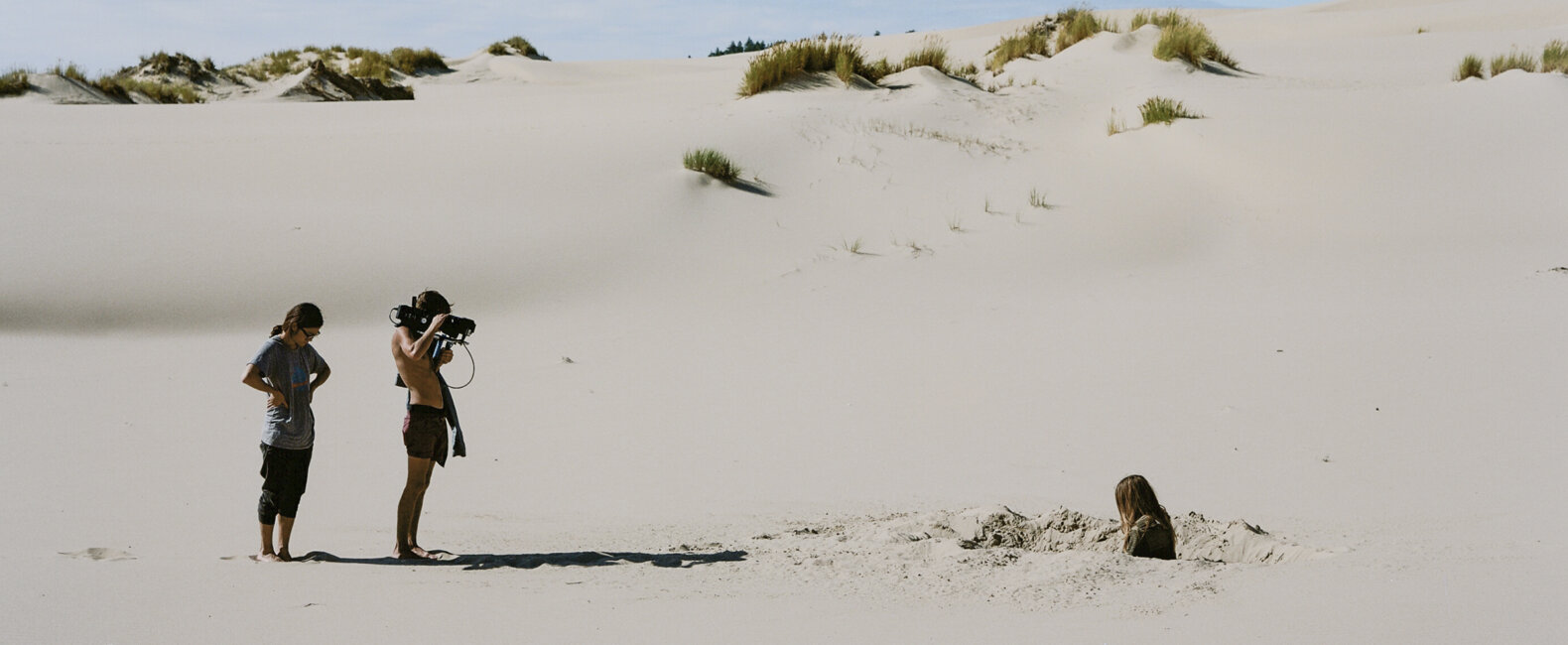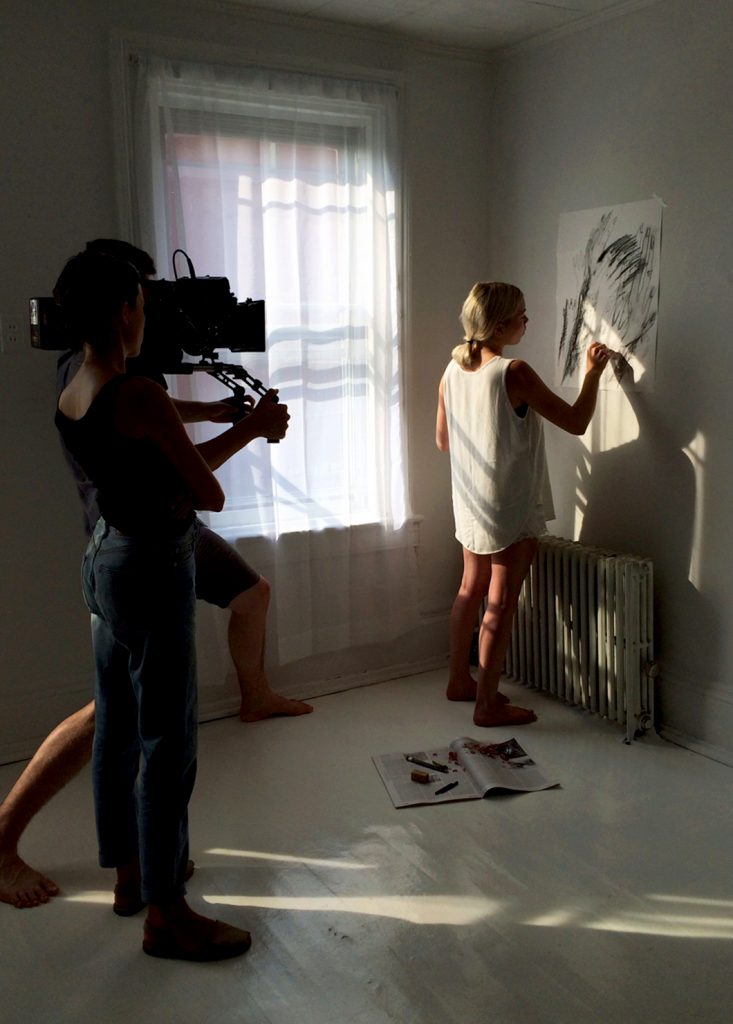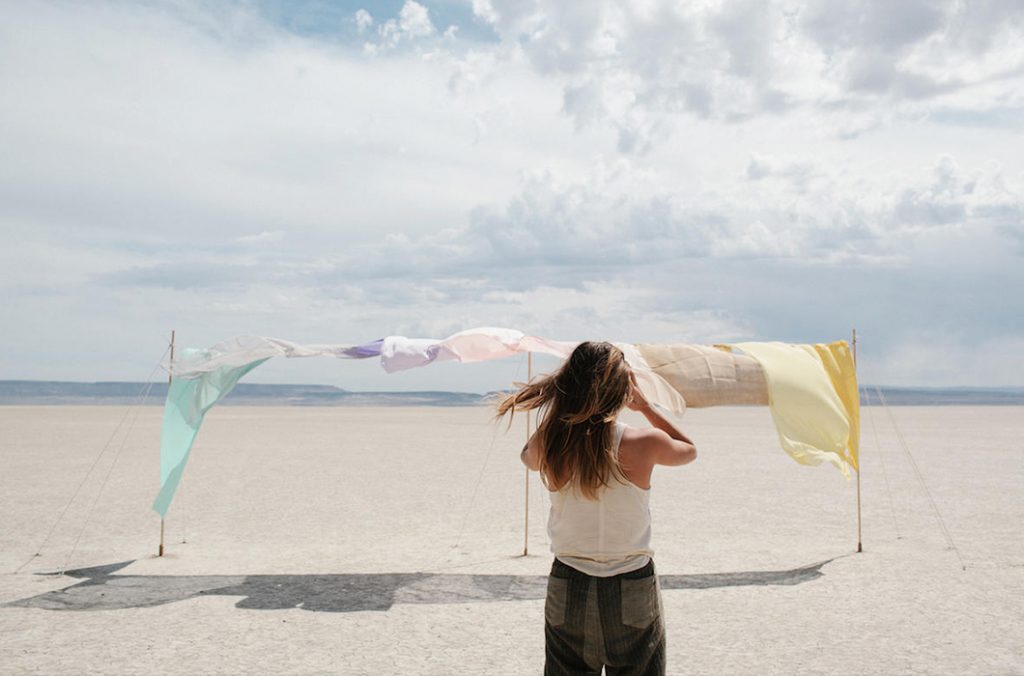It’s funny. One of the reasons we were so excited to talk to the creative husband-and-wife duo Sea Chant was to find out how they’ve cultivated such a distinct visual style. Everything they do is beautiful, colorful, almost hyperreal. They have a consistency of voice that a lot of beginning photographers and filmmakers strive for. But when we asked how they’ve done it, the conversation took a surprising (and great) 90-degree turn. It turns out Andrew and Carissa Gallo have no interest in aesthetic consistency, in voice development — in being “Sea Chant-y.”
“It’s better to forget yourself and appreciate what’s going on in your world,” Carissa told us. “That is what evolves you. Forgetting yourself is how you evolve.”
If you’ve ever been concerned with developing your voice and style, this conversation might change your mind. Here’s Sea Chant.

Where are you guys?
Andrew: We’re in Portland, Oregon, at our studio on 28th and Burnside. I don’t know if you know Portland at all, but we’re in the area that has all the best restaurants.
Have you guys always been in Portland?
Andrew: Sea Chant has always been based in Portland; but before Sea Chant, we had another company out on the East Coast. It was not as fun or creative. It was more like education and a little bit of politics. But we started branching into more creative work and ended up forming Sea Chant, which led to a natural shift out to Portland.
Have you guys always been creative people?
Carissa: We were both immersed in music growing up. But by the time we met in high school, I was mostly interested in photography, and Andrew was mostly interested in film. We didn’t start working together until maybe three years after we met, when we first started dating. We’ve been making things together ever since. We made a Christmas card video the first year we got married.
Andrew: For our friends.
Carissa: It was pretty lame.
The Internet has created a sort of obsession with aesthetics. It’s okay to pursue what’s interesting to you right now and not put yourself in a box.
So how did Sea Chant come about?
Carissa: It started when we were living in D.C., and we were creatively unfulfilled by the work we were doing professionally.
Andrew: If you want to commit creative suicide, just move to D.C.
Carissa: So we moved to Portland to start Sea Chant. We based it on a model of personal work fueling client work, which then fuels personal work, and so on. That cyclical pattern is very inspiring to us. It energizes us. We realized during our time in D.C. that just the act of making things for money wasn’t what made us excited about life. We started Sea Chant so we could pursue our creativity and make things with no strings attached. People resonate with what we made and hire us. And then, hopefully, we’re able to do what we love as our job.
Can you tell me a little more about this “personal work fueling client work” model?
Carissa: Basically, we can’t expect someone to hire us for work that we’re talking about but not doing. For the past two years, we’ve taken a month off in the summer to go create something fun. It’s a lot harder to make time for that than we thought, but it’s important to us. We’ve had situations in the past where we’d do a certain type of work over and over again, and then two years go by and we’re like, “All we’ve been doing for two years is this one type of work—even though that’s not where we are mentally or creatively anymore.” We’re trying to keep ourselves on the trajectory we actually want to be on.
Do you guys have a style? Is there a “Sea Chant Look”?
Carissa: No, I don’t feel like we do. I get frustrated sometimes when I look at our site or at my own photography and I’m like, “It’s all over the place.” At the same time, though, I’d be super annoyed if it was like, “Your style is sun flares, so every photo you take has to have sun flares.” That would really frustrate me. Or, “You can only shoot stuff in the studio — that’s your style.”
Andrew: If there is any sort of consistency, it’s just that we’re the ones making all this stuff. We have a point of view and that’s what comes through. But it can be frustrating when clients come to you and they’re like, “Hey, we want that Sea Chant look.” Then you feel like you’re forcing it on something where it doesn’t belong. As artists, we move and shift. We’re chameleons, always changing. That’s a good thing. A natural thing. As artists who run a company, we have to be really careful that we’re still moving as artists andmoving as a company. I don’t think it’s a good business model, but it’s a good artist’s model. We’ve decided we’re all about doing work we love.
Carissa: It’s a super saturated market right now. There are so many people doing the same thing vocationally. But what’s cool is that while you can try to copy someone else’s style you can never see the world the way someone else sees the world. Everyone’s different and everyone has a different brain. My work is separate from Andrew’s, and Andrew’s work is separate from mine. And our individual work is different than our work together, because our work together is this fusion of the two.
Andrew: If you looked at our work and said, “There’s no consistency here,” I’d be upset about that. I’m glad people see consistency. But I wouldn’t want it to be like, “I expect to see that from now on.”
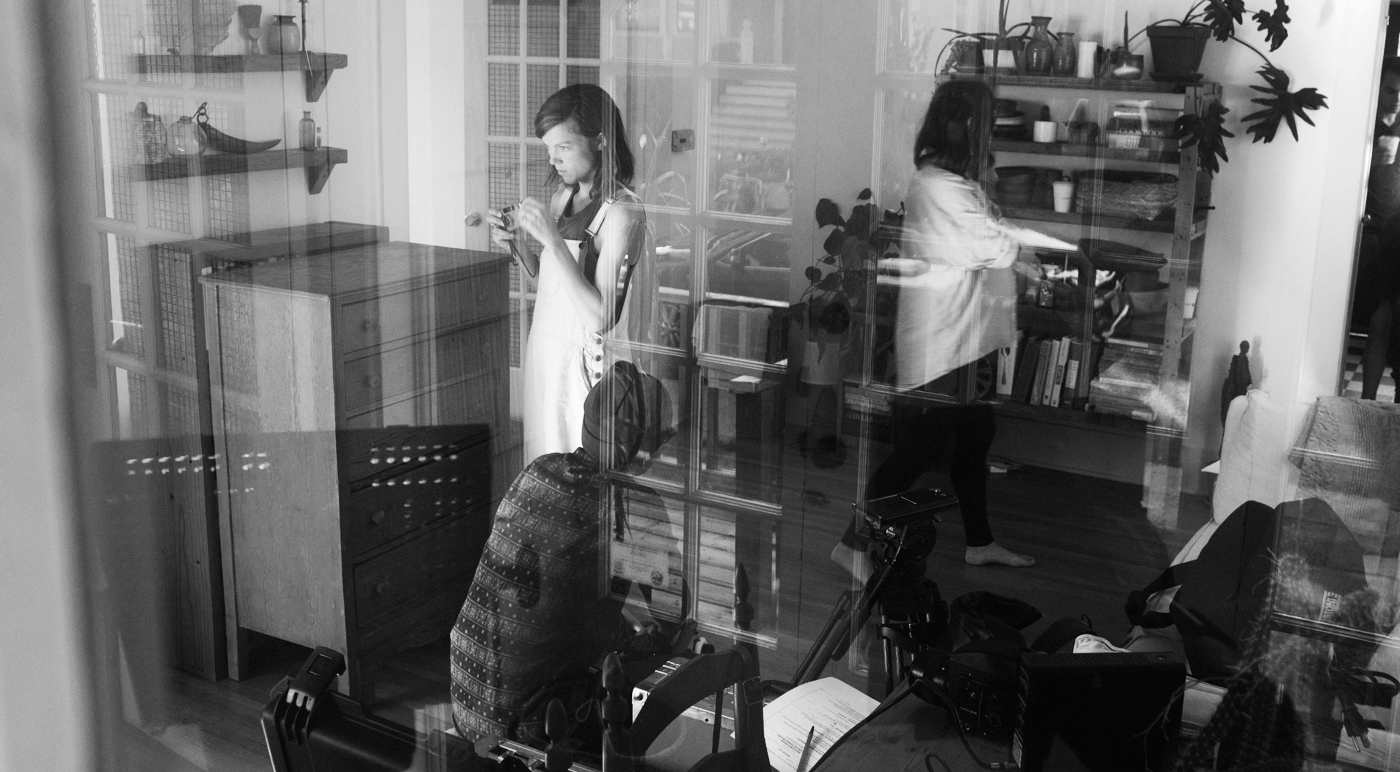
A lot of young artists are concerned about developing a voice and a style, but I like how you guys don’t seem to care.
Carissa: The Internet has created a sort of obsession with aesthetics. I hear people talk about it down to the Instagram pictures they post. “I can’t post that photo because it’s not in my aesthetic.” I’m sure that’s a real business-savvy way to think about your work, but I’ve never been business savvy. I can’t think that way. It feels really limiting.
We were in Lima recently, and we went to Mario Testino’s gallery. When you think of Mario Testino, you think of a specific genre of photography. At least I do. But at the show, we were walking into these different rooms. In one room there were these photos he’d taken of indigenous people, and in another room there were pictures of, like, Kate Moss. It was almost like you were looking at a different photographer’s work. But that’s what was beautiful about it. He was curious about all these people. He could have said, “I’m not going to do that because it’s not really my style.” It was an example to me how it’s okay to pursue what’s interesting to you right now and not put yourself in a box.
Andrew: Look at Radiohead or Leonard Cohen or Lou Reed. These artists were always changing and evolving. To me, that’s what makes an interesting, timeless artist. Someone who always posts white photos of lifestyle and coffee — I don’t know, I don’t really care. It just doesn’t seem very deep to me anymore.
Carissa: It’s cool to look back at your own stuff from the past — stuff that’s not the same as what you’re doing now — and instead of trying to bury it, embrace it. That’s part of what we did and who we were. That’s part of what got us here. Hopefully in five more years, I’ll look at what I’m doing now and say the same.
Andrew: Hopefully the substance is the same though. I hope five years from now people are like, “Whoa, that looks way different than five-years-ago Sea Chant, but it’s still the same tone and storytelling. They still care about the same things.” I hope our point of view still comes through. Artists might change aesthetically, but hopefully the things that matter in their lives are still coming through.
Instead of trying to push yourself to evolve, it’s better to forget yourself and appreciate what’s going on in your world. That is what evolves you.
Do you push yourselves to evolve, or does it happen naturally?
Andrew: I don’t think we’re in control of it. It just happens.
Carissa: Instead of trying to push yourself to evolve, it’s better to forget yourself and appreciate what’s going on in your world. That is what evolves you. Forgetting yourself is how you evolve.
Andrew: Totally. And having a life outside of your work.
When you guys are doing the work you’re supposed to be doing, do you know it?
Andrew: Yes.
Carissa: It feels authentic.

Andrew: Without question. When we’re bidding on projects, I have this thing I do; and it’s been 100 percent accurate so far. I close my eyes and I can usually imagine us on the job, doing the job. But if I close my eyes and I can’t imagine us doing it, it almost never works out. You have to put yourself in that place of, What would it be like to do this? Are we the right people to do it? Do we belong there doing it? Subconsciously, you connect with people in a certain way. First impressions are real, and you just know if it’s good or not. There should be a natural excitement, a natural momentum. If it’s not there and you’re forcing it, that’s usually a bad idea. That seems to be a guiding North Star for us.
I think that’s important to differentiate. Hard work is good, but forcing something is usually bad.
Carissa: I love the type of people — usually older people — who know themselves really well and have the confidence and boldness to say in the moment, “This isn’t working. I’m not doing this.” I look forward to being there one day. What’s the best piece of advice you guys have been given?
Andrew: There’s something this old-school ad guy taught me that I now do with a lot of our projects. He has this “Why Test” he does with clients and himself. It’s an exercise to get down to the bottom of why something matters. All you do is ask why. You’re doing a spot about this and the story is going to be that. You ask yourself, Why? Well, the story matters to our market. Why? Because, I don’t know, they buy stuff. Why? Because we’re trying to sell stuff. Why? Because I want to support my family. And he keeps going until you get to something that matters. Then he’s like, “Okay, there you go, talk about that. That’s worth talking about.” Sometimes it’s incredibly annoying, but it always works. All of a sudden you say something you actually care about. “Let’s talk about that.”
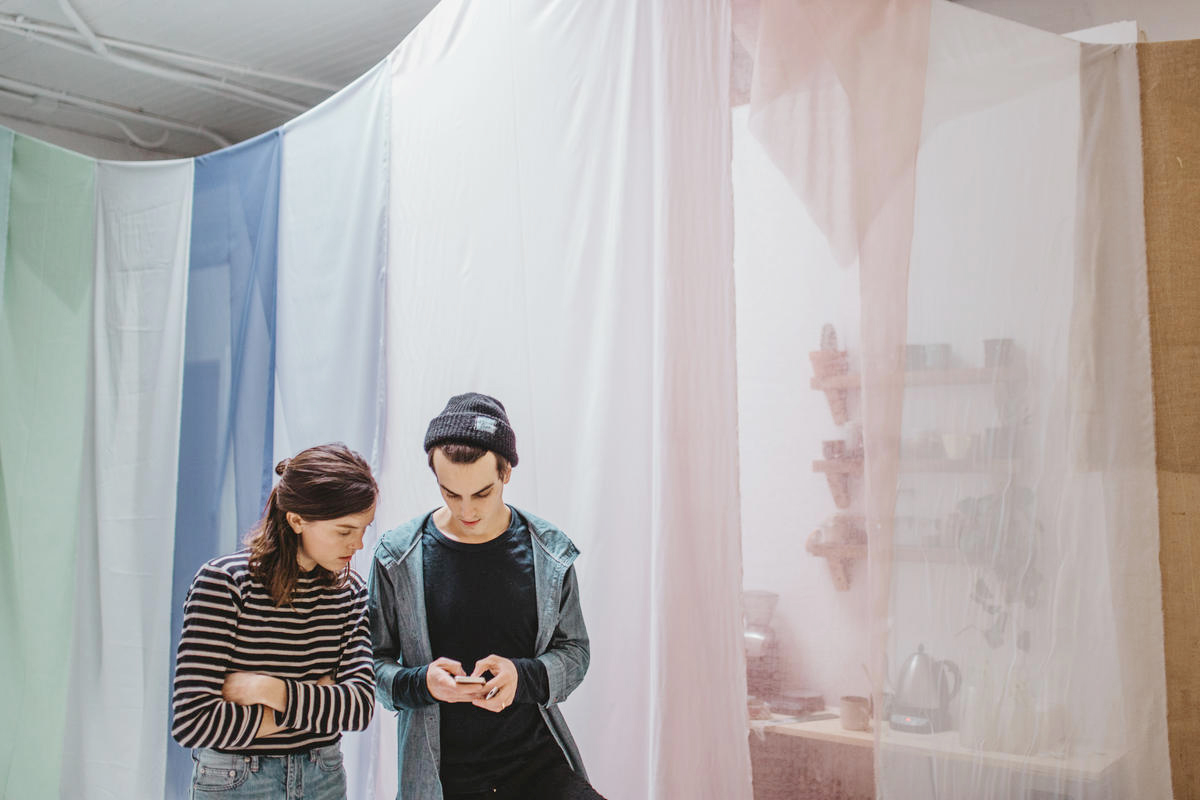
There’s an old rule of writing that says the best way to find your style is to write with no style at all. True style is something innate and honest, not something you have to “find” or “put on.” Talking with Sea Chant and seeing their work just proves the point all the more. Style comes from who you are, from how you see the world. It doesn’t require a lot of thinking. It doesn’t require a lot of self-editing. It’s something you find when you finally stop looking for it.















































































